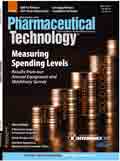Next Steps for the US Biosimilar Regulatory Scheme
With a regulatory pathway for follow-on biologics, industry is wondering what FDA will do next.
The Biologics Price Competition and Innovation Act of 2009 (BPCI) created a new pathway for FDA to approve biological products shown to be "biosimilar" to an innovator or reference biological product. This article provides an overview of questions and concerns raised by this regulatory pathway, particularly those that FDA needs to decide upon before implementing the Act (1).
Defining a biosimilar
A biosimilar or follow-on biologic product is defined by the Act as a biological product, including but not limited to a "protein (except any chemically synthesized polypeptide)." This definition covers any non-chemically produced protein or polypeptide. But FDA suggests that polypeptide is distinguishable from protein and that BPCI only covers protein. The agency has sought public comment on "develop[ing] a regulatory definition ... of protein (as distinguished from peptide or polypeptide)" and may incorporate those comments into a guidance for industry (1).
BPCI requires that the follow-on product be "highly similar to the reference product," and that there be "no clinically meaningful differences between the biological product and the reference product in terms of the safety, purity, and potency" (2). FDA also sought public comment on the scientific and technical factors that should be considered when determining whether a biological product is highly similar to a reference product (1).
BPCI also provides a parallel, optional "interchangeability" pathway for applicants to prove that their product is "interchangeable" with a reference product. The "interchangeable" standard can be met if the applicant's product "may be substituted for the reference product [by a pharmacist] without the intervention of the health care provider" (2).
Determining biosimilarity
A central issue at stake for follow-on biologic drug manufactures and regulators is how to demonstrate biosimilarity. Not surprisingly, different stakeholders disagree on how much data FDA should require. Reference-product sponsors are urging the agency to require extensive clinical trials on all indications because "clinically meaningful differences" are often hard to predict from analytical data alone. Follow-on sponsors, however, are encouraging FDA to use discretion in deciding whether clinical trials should be necessary. Several middle-ground approaches were proposed at a November 2010 public hearing (3), including: allowing follow-on biologic sponsors to extrapolate clinical-trial data from one indication to another; requiring pharmacokinetics and pharmacodynamic studies for premarketing approval while allowing immunogenicity testing to be conducted in postmarketing studies; allowing follow-on biologic sponsors to use data from non-US licensed products; and permitting follow-on biologic sponsors to "buy" access to the innovators' clinical-trial data.
The move to market
BPCI grants a 12-year market exclusivity to an innovator reference product. There are some exceptions, however. Exclusivity does not apply to: "a supplement for ... the reference product" or "a subsequent application filed by "the same ... manufacturer or a licensor" of the reference product, or a "predecessor in interest, or other related entity ... for [certain changes of the reference products]" (2). Recognizing today's complex corporate and business relationships, FDA sought public comment on what types of "other related entity" may be deemed ineligible for a second 12-year exclusivity period (1).
In addition to seeking FDA approval, a follow-on sponsor may also have to undergo a complex patent-dispute procedure against the reference-product sponsor. The patent-dispute procedure is modeled in some aspects after the patent-dispute procedure in the Hatch-Waxman Act of 1984, but has notable differences. For example, neither the "Orange Book" listing of patents nor the 30-month FDA stay is required under BPCI.
Conclusion
Implementation of BPCI is just beginning. There are complex scientific and intellectual property issues that companies will face before follow-on biologic products are approved by FDA. Althought challenges certainly exist, the public and the bio/pharmaceutical industry look forward to potential cost savings and growth opportunities in this area.
David Rosen is co-chair of Foley & Lardner's Life Science Industry Team and head of the FDA Practice Group. Larry Lian is an Associate in the Chemical Biotechnology & Pharmaceutical Intellectual Property Practice, drosen@foley.com or llian@foley.com.
References
1. Approval Pathway for Biosimilar and Interchangeable Biological Products; Public Hearing; Request for Comments, 75 Federal Register 192, Oct. 5, 2010.
2. 42 USC § 262 (i)(2), Licensing of Biological Products and Clinical Laboratories Subpart 1: Biological Products.
3. FDA Public Hearing, Approval Pathway for Biosimilar and Interchangeable Biological Products Public Meeting, Silver Spring, MD, Nov. 2–3, 2010, www.fda.gov/Drugs/NewsEvents/ucm221688.htm.

Pharmaceutical Tariffs Are Imminent: How Industry is Bracing for Impact
April 16th 2025On April 14, 2025, the Trump Administration launched a national security-driven investigation into pharmaceuticals, a move that will likely result in tariffs being placed on pharmaceutical drugs, ingredients, and other components that are imported from outside of the United States.
Drug Solutions Podcast: A Closer Look at mRNA in Oncology and Vaccines
April 30th 2024In this episode fo the Drug Solutions Podcast, etherna’s vice-president of Technology and Innovation, Stefaan De Koker, discusses the merits and challenges of using mRNA as the foundation for therapeutics in oncology as well as for vaccines.